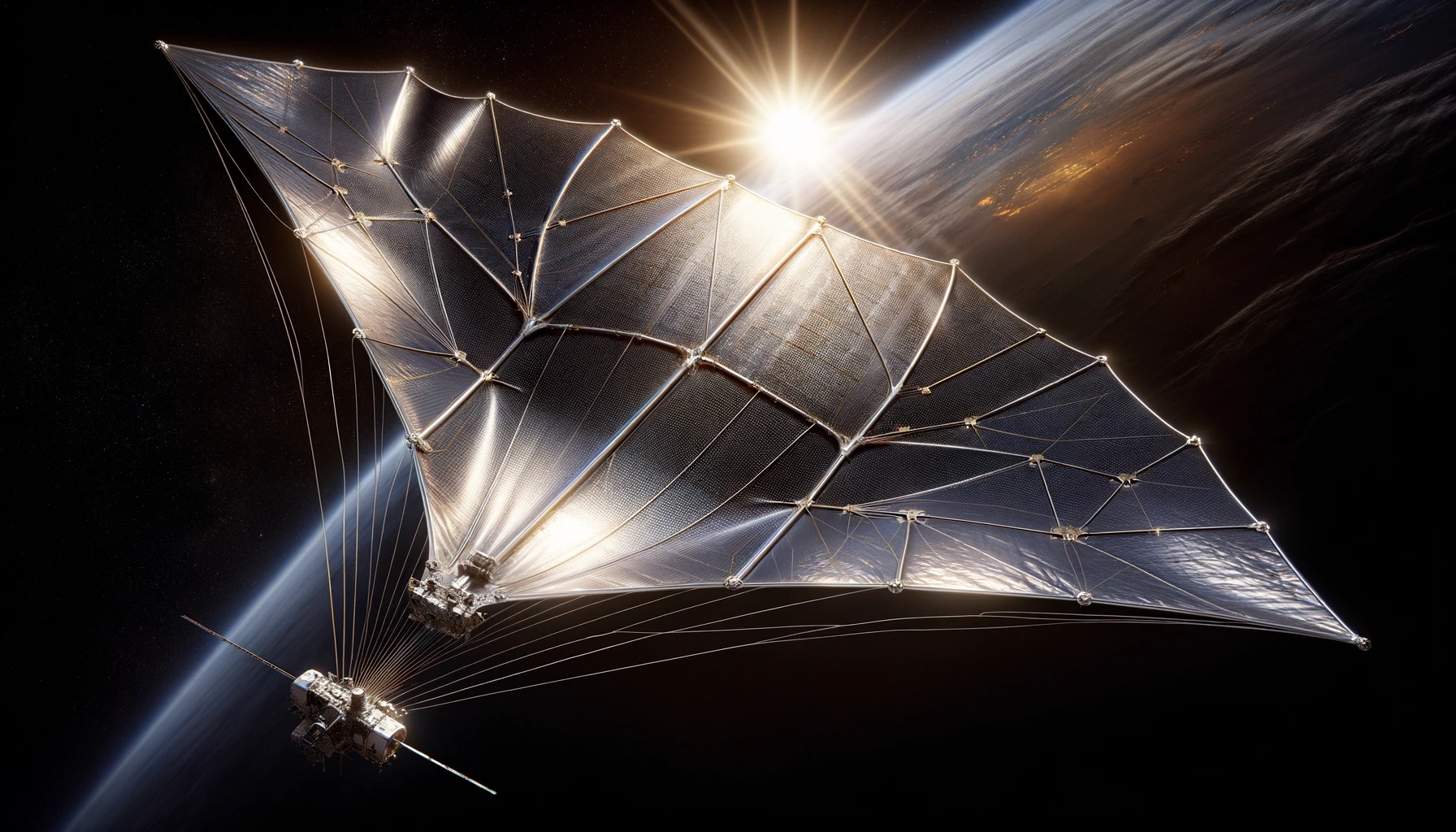“Discover NASA’s groundbreaking solar sail boom technology, set to transform space travel. This article explores the features, development, and potential applications of this next-generation technology, offering a glimpse into the future of sustainable space exploration powered by sunlight.”

NASA’s Next-Generation Solar Sail Boom Technology Introduction
In the ever-evolving arena of space exploration, NASA continues to push the boundaries of what is possible with the introduction of its next-generation solar sail technology. This pioneering innovation, set to launch in the near future, aims to revolutionize space propulsion using the power of sunlight. This article delves into the intricacies of this technology, its development, potential applications, and what it means for the future of space travel.
Background: The Evolution of Solar Sail Technology
Solar sails operate on a simple yet powerful principle: using the momentum of photons from the sun to propel spacecraft. While this idea has been around since the early 20th century, practical implementations have been limited. The first successful demonstration in space was carried out by the Japanese Aerospace Exploration Agency (JAXA) with their IKAROS project in 2010. Following this, NASA’s NanoSail-D2 mission provided further insights into the technology.
NASA’s Next-Generation Solar Sail
NASA’s latest iteration of solar sail technology, referred to as the Solar Sail Boom Technology, is a significant upgrade over its predecessors. This new generation incorporates advanced materials and a novel deployment mechanism that allows for more efficient and reliable operations in space.
Key Features
- Advanced Materials: The sail is made from extremely lightweight, reflective materials that can withstand the harsh conditions of space. These materials are also highly efficient at reflecting sunlight, providing maximum thrust.
- Innovative Deployment Mechanism: One of the standout features of the new technology is its deployment system. Unlike earlier designs, this mechanism ensures a smoother and more reliable deployment of the sail, which can span hundreds of meters across.
Development and Testing
The development of this advanced solar sail technology has been a rigorous process involving extensive testing on Earth. Simulations and scaled-down tests in vacuum chambers have been pivotal in refining the technology. These tests ensure that the sail will deploy correctly in the vacuum of space and can handle the microgravity environment.
Applications in Space Exploration
The potential applications of NASA’s solar sail technology are broad and impactful. Here are a few areas where this technology could make a significant difference:
- Deep Space Missions: Solar sails can provide continuous propulsion without the need for fuel, making them ideal for long-duration deep space missions to the outer planets and beyond.
- Asteroid Exploration: Smaller spacecraft equipped with solar sails could be sent to explore multiple asteroids at a lower cost, providing valuable data without the need for large fuel reserves.
- Space Debris Mitigation: Solar sails could also be used to alter the orbits of space debris, helping to clean up busy orbits around Earth.
Challenges and Solutions
Despite its numerous advantages, the deployment and operation of solar sails face certain challenges:
- Control and Navigation: Maneuvering a spacecraft propelled by solar sails requires precise control of the sail’s orientation relative to the sun.
- Material Durability: The materials used must be durable enough to withstand prolonged exposure to solar radiation and micrometeoroids.
NASA has addressed these challenges through the development of advanced control algorithms and the selection of robust materials for the sail and boom structures.
Future Prospects
The launch of this next-generation solar sail technology is not just a test of new equipment; it is a demonstration of a sustainable and efficient propulsion method that could become standard for future missions. As this technology matures, it could pave the way for more ambitious missions, such as crewed missions to Mars and beyond, powered by solar sails.
Conclusion
NASA’s next-generation solar sail boom technology represents a significant leap forward in space propulsion technology. By harnessing the power of sunlight, this technology offers a sustainable alternative to traditional rocket propellants, opening up new possibilities for exploration and operation in space. With its upcoming launch, the world is set to witness a new era in space exploration, powered by the light of our own sun.
Read Also-
- NASA TESS Mission Pauses for Vital Upgrades: Enhancing Exoplanet Discovery
- NASA Unveils New Strategy for Space Sustainability Amid Orbital Risks
- Unveiling the Mysteries of Jupiter’s Moon: NASA Europa Clipper Mission
- NASA New Lunar Time Zone: A Giant Leap for NASA and Global Space Collaboration










